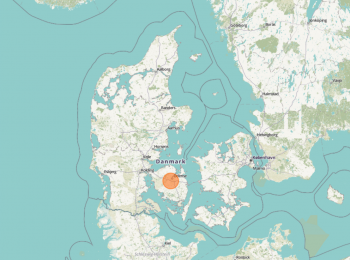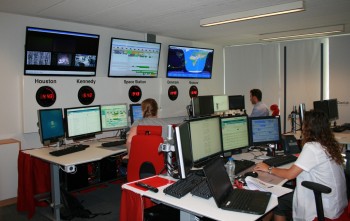ESA works with seven User Support and Operations Centres, or USOCs,throughout Europe that offer support for specific experiments and hardware on the International Space Station.
The Danish Aerospace Company will be supporting Andreas Mogensen from their control room in Odense, Denmark, for the Aquamembrane experiment as well as for MobileHR, Interact, Space Headaches and his educational activities.
As with all control centres they receive live video, data and audio from the International Space Station.
In preparation for iriss and other activities on the International Space Station, the Odense USOC developed procedures, experiment software and collected data before flight as well as supporting training sessions with astronauts at ESA’s astronaut centre in Cologne, Germany. During the missions they provide operational support, replanning, trouble-shooting and quick‐look analysis of data.
“Experiments on the International Space Station require a lot of preparation. First the experiment has to be accepted by ESA, and then the hardware to support the experiment must be designed and built. The next steps are to develop test procedures, training material, train crew and perform ground tests. Usually several years passes by between experiment selection and experiment execution on ISS. The Danish Aaerospace Company has been involved in the preparation of the mission of Andreas Mogensen for several years and will support Andreas every day from 8:00 – 22:00 from the control centre in Odense.” says Poul Knudsen, Danish Aerospace Company’s USOC manager
The Danish Aerospace Company was established in 1993 as an operational User Support and Operations Centre during the Space Shuttle D2‐Spacelab mission and ESA’s Euromir‐95 mission to Russian space station Mir.
Since 2004 they have been supporting medical and other experiments on the International Space Station for ESA and NASA. During the past year Danish Aerospace has supported more than 41 large and 123 smaller test sessions at the space station of lengths between five minutes to four hours each. This support was both for their own equipment as well as for ESA’s equipment. In total they supported 125 hours of scientific activities done by astronauts on the International Space Station in 2014.
“We are ready to support Andreas Mogensen from launch to landing. We wish him all the best of luck in the world on his historic and exciting journey. He has worked hard to get to this point, and we hope he will enjoy the fantastic experience. Our team will be following him closely from ground in Odense and we will be supporting him in many of the experiments.“ says Thomas A. E. Andersen, CEO of Danish Aerospace.




Discussion: no comments